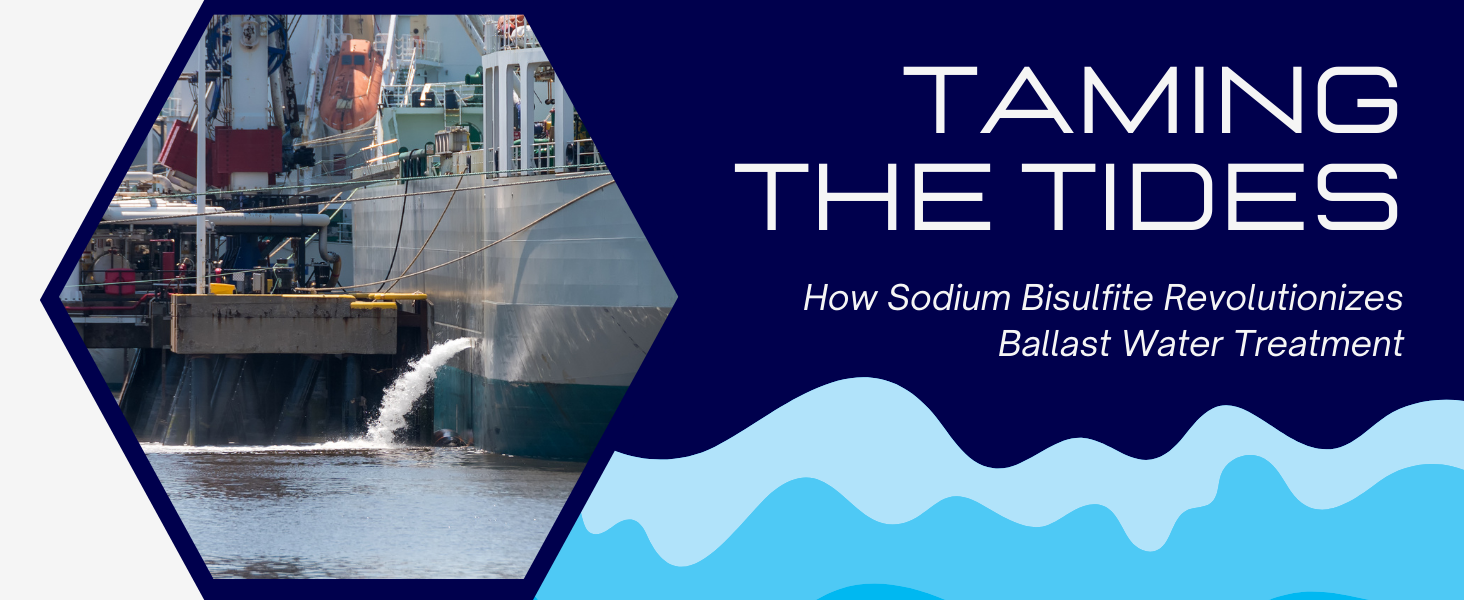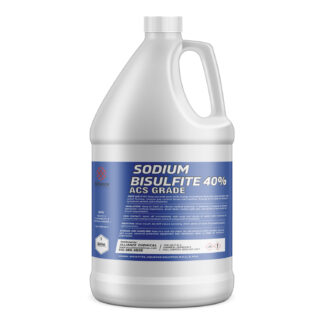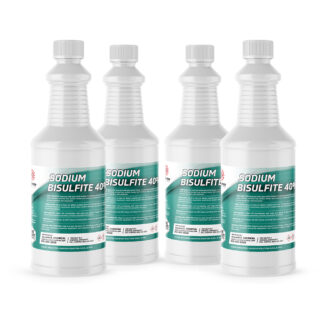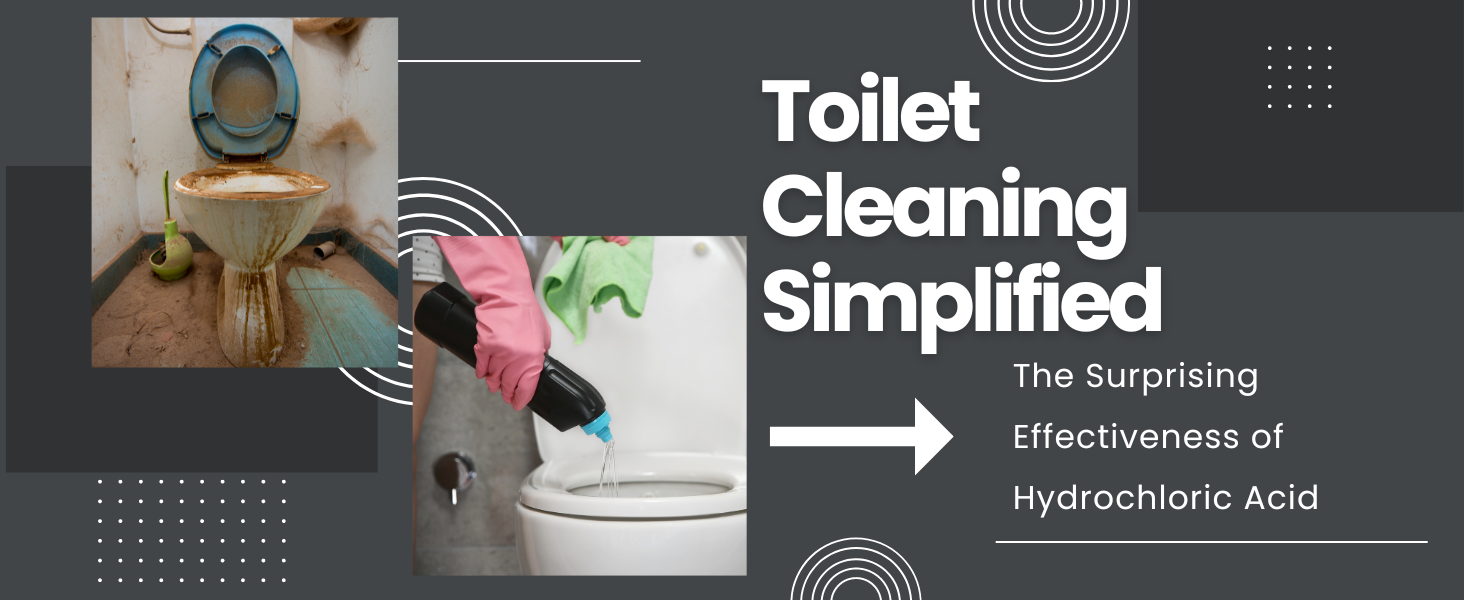
Taming the Tides: How Sodium Bisulfite Revolutionizes Ballast Water Treatment
Table of Contents
- 1. Overview: The Critical Role of Ballast Water Treatment
- 2. Introduction to Sodium Bisulfite: A Key Solution for Ballast Water
- 3. Chemical Properties: Understanding Sodium Bisulfite’s Effectiveness
- 4. Application Methods: How Sodium Bisulfite is Used in Ballast Water
- 5. Best Practices: Optimizing Sodium Bisulfite Use in Marine Environments
- 6. The Alliance Chemical Approach: Quality, Safety, and Innovation
- 7. Regulatory Compliance and Environmental Considerations
- 8. Global Impact: Sodium Bisulfite in International Waters
- 9. Challenges and Solutions: Addressing Common Concerns in Ballast Water Treatment
- 10. Future Directions: Emerging Trends and Technologies in Ballast Water Management
Overview: The Critical Role of Ballast Water Treatment
Ballast water, an essential component for the stability and safety of ships at sea, plays a surprisingly pivotal role in global marine ecosystems. The practice of taking on and discharging ballast water is as old as modern shipping itself, yet its impact on the environment has become a topic of intense scrutiny in recent years.
The Necessity of Ballast Water
In maritime voyages, ballast water is indispensable. It provides balance and stability to vessels, compensating for changes in cargo load, fuel consumption, and water levels. Without it, ships would be less maneuverable and more prone to capsizing, making the transportation of goods across seas a hazardous endeavor.
Environmental Implications
However, the environmental implications of ballast water discharge are profound. Ships inadvertently pick up a variety of marine organisms – from bacteria and microbes to small fish and aquatic plants – in their ballast tanks at one port and release them into foreign ecosystems at another. This discharge can lead to the introduction of invasive species, disrupting local ecosystems, outcompeting native species, and causing significant ecological and economic damage.
The Response to the Challenge
In response to these environmental concerns, the International Maritime Organization (IMO) adopted the Ballast Water Management Convention, mandating ships to manage their ballast water to avoid the transfer of potentially harmful aquatic organisms and pathogens. This is where ballast water treatment systems come into play, with technologies like UV radiation, filtration, and chemical treatment being employed to mitigate these risks.
Sodium Bisulfite: A Key Player in Ballast Water Treatment
Among various treatment solutions, sodium bisulfite emerges as a prominent chemical used to neutralize harmful organisms in ballast water. Its effectiveness in treating ballast water without leaving harmful residues makes it an environmentally sound choice, aligning with international regulations and environmental safety standards.
In the following sections, we’ll dive deeper into the properties and applications of sodium bisulfite, best practices for its use, and how Alliance Chemical is contributing to safer and more sustainable maritime practices through its innovative approach to ballast water treatment.
Introduction to Sodium Bisulfite: A Key Solution for Ballast Water
In the arena of maritime environmental protection, sodium bisulfite emerges as a pivotal agent in ballast water treatment. This section delves into the specifics of this compound, illustrating its crucial role in modern maritime operations and environmental stewardship.
Understanding Sodium Bisulfite
Sodium bisulfite (NaHSO3) is not just another chemical compound; it’s a versatile player in various industries, most notably in maritime applications. Its unique composition – a blend of sodium, hydrogen, sulfur, and oxygen – endows it with properties that are invaluable in mitigating environmental risks associated with shipping. As a reducing agent, it plays a significant role in neutralizing oxidizing elements, and as a preservative, it extends the shelf life of various products.
The Ballast Water Challenge
Ballast water, essential for the stability of vessels, has long been a vector for ecological disruption. When ships discharge ballast water, they can inadvertently introduce non-native species into new environments, leading to ecological imbalances. Sodium bisulfite addresses this global issue head-on by effectively deactivating harmful microorganisms and invasive species present in ballast water, thus curtailing their unintended transport across the globe.
Alignment with Global Standards
Sodium bisulfite’s compatibility with international maritime regulations is a key factor in its widespread adoption. Its use helps ships comply with the rigorous standards set by the International Maritime Organization (IMO) for ballast water management. These regulations aim to balance the operational needs of the shipping industry with the imperative to protect marine ecosystems.
Eco-friendly and Efficient
Aside from its effectiveness in treating ballast water, sodium bisulfite is lauded for its environmental compatibility. It acts swiftly, neutralizing threats without leaving detrimental residues or by-products. This rapid action and minimal environmental footprint make it a preferred choice for eco-conscious maritime operations.
Broader Implications
The adoption of sodium bisulfite in ballast water treatment is more than a technical solution; it represents a commitment to environmental responsibility and sustainable maritime practices. By leveraging such solutions, the shipping industry takes a significant step towards preserving marine biodiversity and preventing ecological degradation.
As we proceed, we’ll further explore the intricate chemical properties of sodium bisulfite and how it functions effectively in the unique context of ballast water treatment, aligning with both environmental goals and industry standards.
Continue to Chemical Properties: Understanding Sodium Bisulfite’s Effectiveness →
Chemical Properties: Understanding Sodium Bisulfite’s Effectiveness
Sodium bisulfite (NaHSO3) plays a crucial role in ballast water treatment due to its unique chemical properties. This section explores the science behind sodium bisulfite and how these properties make it an effective solution for treating ballast water.
Key Chemical Characteristics
Sodium bisulfite is a compound that is highly effective in neutralizing a wide range of harmful microorganisms found in ballast water. Its chemical formula, NaHSO3, indicates its composition of sodium (Na), hydrogen (H), sulfur (S), and oxygen (O). This compound is known for its strong reducing and dechlorinating properties.
Reducing Agent
As a reducing agent, sodium bisulfite donates electrons to other substances in chemical reactions. This property is particularly useful in neutralizing oxidative agents in ballast water, which can be harmful to marine life. By reducing these agents, sodium bisulfite helps in maintaining the ecological balance in marine environments.
Dechlorination
Another significant feature of sodium bisulfite is its ability to dechlorinate water. Chlorine, often used in industrial processes, can be toxic to aquatic life. Sodium bisulfite reacts with chlorine in water to form harmless compounds, thus mitigating the risk of chlorine toxicity in marine ecosystems.
Effectiveness and Safety
Due to its effectiveness and safety profile, sodium bisulfite is widely used in ballast water treatment systems. It ensures that the discharged water is free from harmful organisms while being safe for the marine environment. This balance between effectiveness and environmental safety makes sodium bisulfite an ideal choice for sustainable maritime practices.
Understanding these chemical properties of sodium bisulfite not only highlights its importance in ballast water treatment but also underscores the need for careful handling and application in accordance with environmental safety standards.
Continue to Application Methods: How Sodium Bisulfite is Used in Ballast Water →
-
 Sodium Bisulfite 40% ACS Grade$27.50 – $2,500.00
Sodium Bisulfite 40% ACS Grade$27.50 – $2,500.00 -
 Sodium Bisulfite 40%$22.00 – $4,000.00
Sodium Bisulfite 40%$22.00 – $4,000.00
Application Methods: How Sodium Bisulfite is Used in Ballast Water
The application of sodium bisulfite in ballast water treatment is a critical aspect of modern maritime operations. This section outlines the various methods and techniques employed to effectively utilize sodium bisulfite in neutralizing harmful organisms in ballast water.
Injection and Mixing Techniques
One of the primary methods of applying sodium bisulfite is through direct injection into the ballast water system. This process involves the precise dosing of sodium bisulfite solution, ensuring that it is thoroughly mixed with the ballast water. The mixing process is crucial for achieving uniform distribution of the chemical, ensuring all harmful organisms are effectively neutralized.
Monitoring and Control Systems
To optimize the effectiveness of sodium bisulfite treatment, advanced monitoring and control systems are employed. These systems regulate the amount of sodium bisulfite injected based on various factors such as water quality, temperature, and the volume of ballast water. This automated control ensures the optimal concentration of sodium bisulfite, maximizing its efficacy while minimizing environmental impact.
Post-treatment Neutralization
After the treatment process, it’s essential to neutralize any residual sodium bisulfite in the ballast water before discharge. This step is vital to prevent any potential harm to marine life. Neutralization is typically achieved by adding substances that react with sodium bisulfite, converting it into harmless by-products.
Safety and Environmental Considerations
Safety and environmental considerations are paramount in the application of sodium bisulfite. Proper handling and storage of the chemical, along with adherence to safety protocols, are essential to protect both the crew and the marine environment. The environmentally friendly nature of sodium bisulfite, when used correctly, aligns with global efforts to preserve marine ecosystems.
This detailed look at the application methods not only underscores the effectiveness of sodium bisulfite in ballast water treatment but also highlights the importance of responsible usage and adherence to environmental standards in maritime operations.
Continue to Best Practices: Optimizing Sodium Bisulfite Use in Marine Environments →
Best Practices: Optimizing Sodium Bisulfite Use in Marine Environments
To ensure the effective and environmentally responsible use of sodium bisulfite in marine settings, particularly in ballast water treatment, certain best practices need to be followed. This section discusses these practices, offering guidance for optimizing the use of sodium bisulfite while minimizing its environmental impact.
Accurate Dosing
The key to effective ballast water treatment is the accurate dosing of sodium bisulfite. It’s essential to calculate the correct amount based on the volume of ballast water and the concentration of organisms present. Overdosing can lead to unnecessary environmental impact, while underdosing might not effectively neutralize all harmful organisms.
Efficient Mixing
Once dosed, ensuring efficient mixing of sodium bisulfite in the ballast water is crucial. Proper mixing ensures uniform distribution of the chemical, maximizing its effectiveness against invasive species and pathogens.
Monitoring and Adjustments
Continuous monitoring of the ballast water treatment process is vital. This involves regularly checking the concentration of sodium bisulfite and the condition of the water. Adjustments should be made as needed to maintain optimal treatment efficacy.
Environmental Compliance
Adhering to environmental regulations and standards is not just a legal requirement but also a moral imperative. Ensure that the use of sodium bisulfite aligns with local and international environmental guidelines, particularly those pertaining to marine ecosystems.
Regular Maintenance of Equipment
Regular maintenance of the equipment used in ballast water treatment is essential. Well-maintained equipment ensures the consistent and effective application of sodium bisulfite, reducing the risk of malfunctions or inefficiencies.
Training and Safety Protocols
Providing thorough training to personnel involved in the handling and application of sodium bisulfite is crucial. Adequate training ensures safe handling procedures, proper application techniques, and an understanding of the environmental implications of the chemical’s use.
By following these best practices, maritime operations can optimize the use of sodium bisulfite in ballast water treatment, contributing to the protection of marine environments and adhering to global ecological standards.
Continue to The Alliance Chemical Approach: Quality, Safety, and Innovation →
The Alliance Chemical Approach: Quality, Safety, and Innovation
At Alliance Chemical, our commitment to excellence is evident in every aspect of our sodium bisulfite production and supply chain. We understand the critical role our products play in environmental protection and maritime safety, and we strive to exceed industry standards in quality, safety, and innovation.
Uncompromised Quality and Safety
Our Sodium Bisulfite 40% ACS Grade is a testament to our dedication to quality. Specially formulated to meet the stringent American Chemical Society (ACS) grade standards, it ensures the highest level of purity and effectiveness for ballast water treatment. Similarly, our standard Sodium Bisulfite 40% offers reliable performance for diverse industrial applications.
Innovative Solutions
Innovation is at the heart of what we do at Alliance Chemical. We continuously explore new formulations and techniques to enhance the efficiency and environmental compatibility of our products. Our R&D efforts are geared towards developing solutions that not only meet but anticipate the evolving needs of the maritime and environmental sectors.
Customer-Centric Approach
We believe in building strong relationships with our clients. By understanding their unique needs and challenges, we tailor our solutions to provide the most effective and sustainable outcomes. Our extensive range of products, including specialized formulations, can be explored in our online shop, where we offer convenience and accessibility to our customers.
Embracing the principles of quality, safety, and innovation, Alliance Chemical stands as a leader in the chemical industry, dedicated to advancing environmental stewardship and maritime safety through our superior sodium bisulfite solutions.
Continue to Regulatory Compliance and Environmental Considerations →
Regulatory Compliance and Environmental Considerations
Effective ballast water management using sodium bisulfite is not only a matter of operational efficiency but also of regulatory compliance and environmental responsibility. This section explores the various regulations governing ballast water treatment and the environmental considerations that must be taken into account.
International Maritime Organization (IMO) Standards
The International Maritime Organization plays a pivotal role in setting global standards for ballast water treatment. The IMO’s Ballast Water Management Convention outlines specific guidelines to control the transfer of harmful aquatic organisms and pathogens through ballast water. Compliance with these standards is crucial for any sodium bisulfite-based ballast water treatment process.
Environmental Protection Agency (EPA) Regulations
In addition to IMO standards, regional bodies like the United States Environmental Protection Agency (EPA) also set regulations for ballast water treatment. These regulations are designed to protect local ecosystems from the impacts of invasive species, and adherence to them is mandatory for vessels operating in these regions.
Minimizing Environmental Impact
While sodium bisulfite is effective in neutralizing harmful organisms in ballast water, it’s essential to use it in a way that minimizes its impact on the marine environment. This includes careful management of dosing, proper handling and storage of the chemical, and ensuring that any residual sodium bisulfite is neutralized before water discharge.
Staying Informed and Updated
Maritime regulations and environmental guidelines are continually evolving. Staying informed about the latest changes and updates is crucial for maintaining compliance. Regular training and updates for staff involved in ballast water treatment are essential to keep pace with these changes.
Adherence to these regulatory standards and environmental considerations not only ensures legal compliance but also demonstrates a commitment to protecting the world’s marine ecosystems. Through conscientious practices, the maritime industry can significantly contribute to the global effort of preserving marine biodiversity.
Continue to Global Impact: Sodium Bisulfite in International Waters →
Global Impact: Sodium Bisulfite in International Waters
The use of sodium bisulfite in ballast water treatment has implications that extend far beyond local shores, affecting marine environments and shipping practices around the globe. This section examines the global impact of sodium bisulfite in the context of international maritime operations.
Worldwide Adoption and Standardization
As international trade continues to expand, the need for standardized ballast water treatment methods becomes increasingly important. Sodium bisulfite, with its proven effectiveness and compatibility with international standards, is being adopted worldwide. This global adoption underscores the need for a uniform approach to protecting marine ecosystems while facilitating international trade.
Protecting Biodiversity in International Waters
The introduction of invasive species through ballast water discharge is a concern in waters around the world. Sodium bisulfite plays a significant role in mitigating this risk, helping to preserve the biodiversity of marine ecosystems. Its use contributes to maintaining the delicate balance of these ecosystems, which are vital for the health of our planet.
Collaborative Efforts for Sustainable Seas
Addressing the challenges of ballast water treatment requires global collaboration. Countries, international organizations, and the maritime industry must work together to ensure the responsible use of chemicals like sodium bisulfite. Such collaborative efforts are essential for achieving sustainable maritime practices and protecting the world’s oceans.
Future Prospects and Innovations
The future of sodium bisulfite in ballast water treatment looks promising, with ongoing research and innovation aimed at enhancing its effectiveness and minimizing any potential environmental impact. The global maritime community continues to explore new methods and technologies to improve ballast water management, with sodium bisulfite playing a key role in these developments.
The global impact of sodium bisulfite in ballast water treatment is a testament to its effectiveness and the collective commitment to preserving marine environments. As we navigate towards a sustainable future, the role of sodium bisulfite in international waters remains crucial in the fight against ecological disruption.
Continue to Challenges and Solutions: Addressing Common Concerns in Ballast Water Treatment →
Challenges and Solutions: Addressing Common Concerns in Ballast Water Treatment
While the use of sodium bisulfite in ballast water treatment presents many advantages, there are also challenges that need to be addressed. This section highlights common concerns in ballast water treatment and the solutions provided by sodium bisulfite, along with other innovative approaches.
Challenge of Invasive Species
The primary challenge in ballast water treatment is the prevention of invasive species transfer. Sodium bisulfite effectively neutralizes a broad range of organisms, thereby reducing the risk of ecological imbalances caused by such invasions.
Chemical Residue Concerns
A concern with chemical treatments, including sodium bisulfite, is the potential for residual chemicals in discharged water. Advances in treatment technology and strict adherence to dosing guidelines help mitigate this issue, ensuring that treated water is safe for marine life.
Balancing Treatment Efficacy and Environmental Safety
Finding the right balance between effective treatment and environmental safety is a key challenge. Continuous research and development are crucial in this regard, as they lead to more refined and eco-friendly treatment solutions. Sodium bisulfite, with its low environmental impact when used correctly, represents a significant step in this direction.
Adapting to Regulatory Changes
The evolving nature of international and regional regulations presents another challenge. Staying informed and adaptable is essential for compliance and environmental stewardship. Companies like Alliance Chemical play a crucial role in helping the maritime industry adapt to these changes.
Overall, while challenges in ballast water treatment persist, the use of sodium bisulfite, along with ongoing innovation and adherence to regulations, offers effective solutions to these concerns, paving the way for more sustainable maritime practices.
Continue to Future Directions: Emerging Trends and Technologies in Ballast Water Management →
Future Directions: Emerging Trends and Technologies in Ballast Water Management
The landscape of ballast water management is continually evolving, with new trends and technologies emerging to address environmental challenges more effectively. This section looks ahead to what the future might hold for ballast water treatment and the role of sodium bisulfite in these advancements.
Technological Innovations
Technological advancements are set to revolutionize ballast water treatment. Innovations in filtration, ultraviolet radiation, and chemical treatment methods promise more efficient and environmentally friendly solutions. Sodium bisulfite, as a part of these advancements, is likely to see enhancements in its application and effectiveness.
Increased Focus on Sustainability
The maritime industry is increasingly focusing on sustainability. This shift means greater emphasis on environmentally safe treatments like sodium bisulfite, which offer effective neutralization of harmful organisms without adversely impacting marine ecosystems.
Regulatory Developments
Regulatory frameworks governing ballast water treatment are expected to become more stringent, reflecting a global commitment to environmental protection. These developments will drive the need for compliant and eco-friendly treatment solutions, where sodium bisulfite is poised to play a significant role.
Collaborative Research and Development
Collaboration between industry players, researchers, and regulatory bodies is key to future advancements in ballast water management. Such collaborations can foster the development of new treatment methods and enhance existing ones like sodium bisulfite-based solutions.
As we look to the future, the role of sodium bisulfite in ballast water management remains integral. With ongoing research, technological innovations, and a collective effort towards sustainability, the future of maritime environmental protection is bright and promising.
Conclusion
Delving into the world of maritime environmental protection, this article has comprehensively examined the critical role of sodium bisulfite in ballast water treatment. From its unique chemical properties that make it an effective neutralizing agent to its application in global maritime operations, sodium bisulfite emerges as a cornerstone in the quest to harmonize industrial activities with environmental preservation.
The exploration of sodium bisulfite’s usage, spanning accurate dosing, efficient application methods, and adherence to stringent environmental regulations, reflects a broader narrative. It’s a narrative about the maritime industry’s evolving responsibility towards our planet’s health, highlighting the delicate balance between technological advancements and ecological sustainability. Alliance Chemical, in this regard, stands at the forefront, championing innovative solutions that uphold environmental integrity while facilitating global trade.
Looking ahead, the dynamic field of ballast water management is poised for transformative change. Emerging trends and technologies promise to enhance the efficacy of treatments like sodium bisulfite, while international collaborations and regulatory developments signal a steadfast commitment to environmental stewardship. In this evolving landscape, sodium bisulfite is expected to adapt, improve, and continue playing a significant role in safeguarding marine biodiversity.
In conclusion, sodium bisulfite’s role in ballast water treatment transcends mere compliance with environmental norms; it embodies a proactive approach to maritime ecological conservation. As Alliance Chemical continues to innovate and lead in this domain, the future of our marine ecosystems looks more secure. It’s a journey of continuous improvement, aligning human ingenuity with the natural world, and ensuring that the vast blue expanses of our planet remain vibrant and teeming with life for generations to come.












